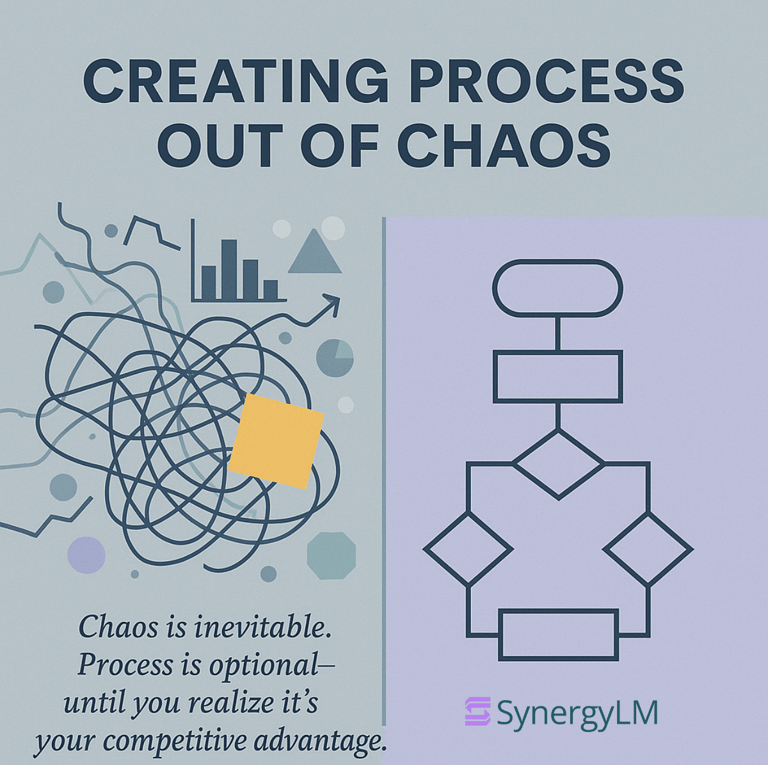Creating Process from Chaos
When teams face rapid growth, high-stakes initiatives, or shifting priorities, chaos often follows. In this post, Liz explores how process—when done right—can transform confusion into clarity and become a true competitive advantage.
Liz Michael
5/19/20252 min read


In any fast-moving organization, chaos isn’t the exception—it’s the norm. Whether you’re scaling a startup, expanding a strategic alliance, or managing a high-impact initiative across multiple departments, complexity creeps in fast. Timelines slip, priorities shift, and suddenly everyone’s working hard—but not necessarily in sync.
So, how do you keep things moving forward when the moving parts start multiplying?
The answer isn't more hustle—it's better process.
The Myth: Process Slows Things Down
Let’s address the elephant in the room: process often gets a bad rap. Many people associate it with red tape, bureaucracy, or unnecessary meetings. And in some cases, that reputation is earned. Over-engineered systems can create bottlenecks instead of removing them.
But when done right, process doesn’t slow down momentum—it accelerates it.
It offers teams a shared language for how things get done, a way to reduce noise and focus energy. It clarifies roles, eliminates duplication of effort, and gives leadership visibility without micromanagement. And perhaps most importantly, it frees up creative and strategic thinking because people aren’t spending their energy navigating ambiguity.
The Reality: Process Is a Form of Empowerment
When you implement the right level of structure, you enable people to move faster with more confidence. They don’t need to wait for answers, reinvent the wheel, or constantly course-correct. Instead, they’re equipped with:
Clarity around priorities
Alignment on goals and timelines
Accountability built into workflows
Flexibility to adapt as needed
Process becomes a platform for progress, not a constraint.
Where to Begin: Turning Chaos into Clarity
If you’re in the middle of a complex initiative and things feel messy, start by zooming out and asking:
What are we actually trying to achieve?
Reground in the purpose of the project or initiative. Without a clearly defined outcome, even the best plans will drift.What’s essential—and what’s noise?
Identify the critical path. What tasks directly impact your success, and what’s just adding friction?Who’s accountable for what?
Ambiguity around ownership is one of the top reasons teams stall. Make responsibilities explicit—even if roles evolve.How do we track progress without micromanaging?
Lightweight dashboards, weekly check-ins, or a Kanban board can provide visibility and autonomy.What’s the feedback loop?
Regular retrospectives or quick debriefs allow you to refine the process as you go. Process isn’t set in stone—it’s meant to evolve.
The Bottom Line
Chaos will always find its way in, especially when you’re doing important, innovative work. But it doesn’t have to take over. By embracing thoughtful, flexible process design, you can guide your team through complexity with clarity—and even turn it into a competitive advantage.
After all, innovation thrives not in chaos, but in confidence—and confidence is what good process delivers.
SYNERGYLM, LLC
liz.michael@synergylm.net
7901 4th St. N #25825
St. Petersburg, FL 33702
© 2025. All rights reserved.


